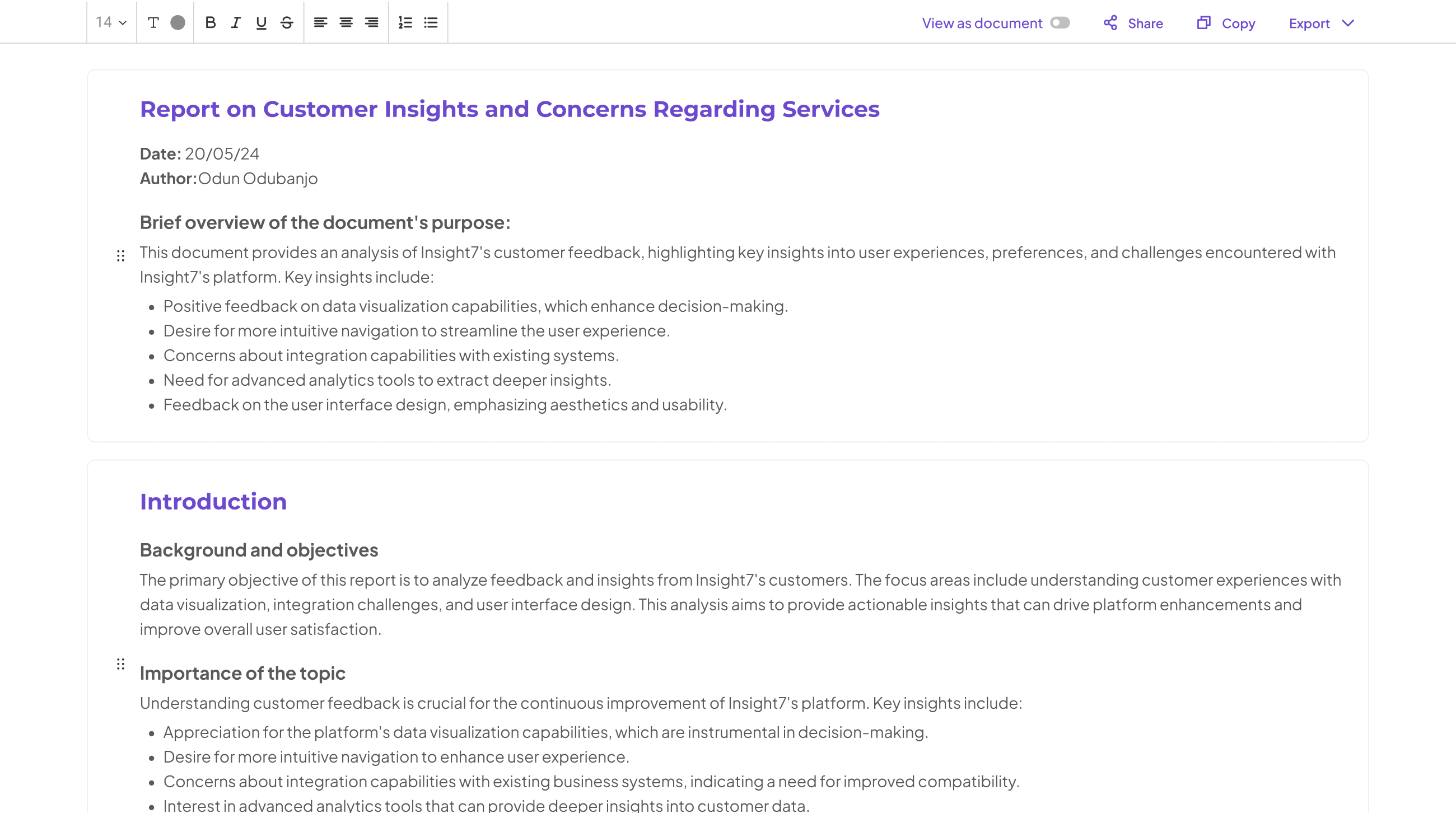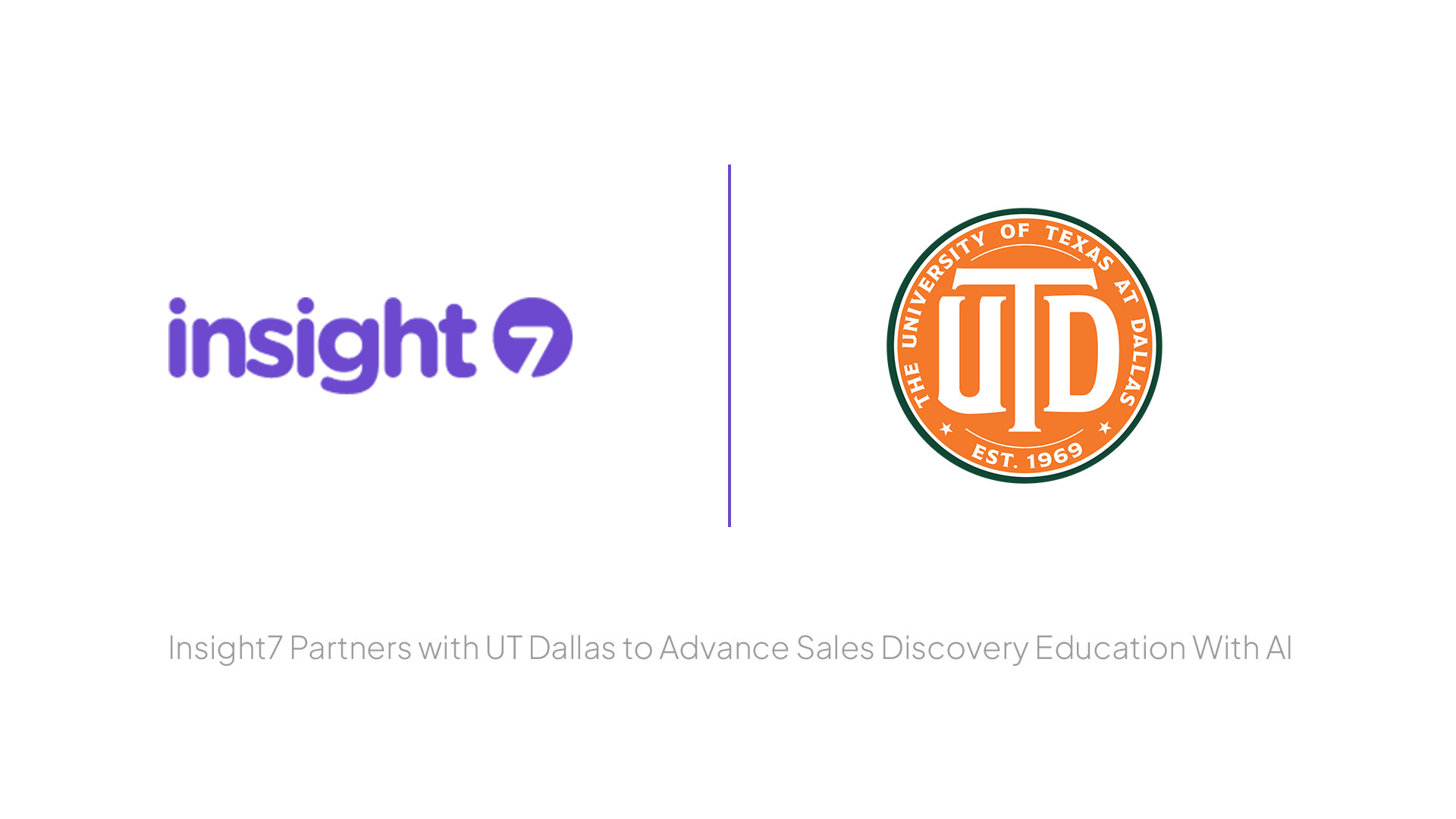Best Tools to Analyze Voice of Customer Across Focus Group Segments
-
Bella Williams
- 10 min read
Focus Group Insights provide invaluable understanding in the realm of Voice of Customer analysis. When businesses engage with customers in a focused setting, they can capture diverse perceptions and emotions that quantitative data often overlook. This qualitative feedback serves as a crucial link between product development and consumer desires, establishing a solid foundation for strategic decisions.
Employing these insights enables teams to identify patterns and themes, transforming raw feedback into actionable strategies. As the demand for timely, relevant data grows, leveraging effective tools becomes essential. Analyzing these insights not only streamlines processes but also enhances the accuracy of customer understanding, leading to improved customer experiences and business outcomes.
Transcribe & extract insights from interviews. At Scale.

Understanding Focus Group Insights: An Overview
Focus Group Insights are pivotal in understanding customer sentiment and preferences. They gather qualitative data from targeted participants, fostering rich discussions that reveal deeper motivations behind consumer behaviors. These insights allow brands to grasp the nuances of customer feedback, uncovering what truly matters to their audience.
To effectively understand these insights, consider the following key aspects:
Diverse Segments: Engaging varied demographic groups enhances the breadth of insights you collect. Each segment offers unique perspectives that can inform multiple areas of your business.
Discussion Dynamics: The quality of interaction within focus groups shapes the insights gleaned. Facilitators must encourage open dialogue to unearth honest opinions and stimulate richer data.
Actionability: Focus Group Insights must drive decision-making. Translating findings into actionable strategies is essential for adapting products and services to meet customer demands.
By comprehending the intricacies of Focus Group Insights, organizations can advance their ability to align with customer expectations, ultimately leading to a more customer-centric approach in their operations.
What Are Focus Groups and Their Role in Customer Feedback?
Focus groups are a valuable tool for gathering qualitative data, offering diverse perspectives on customer experiences. By assembling a small group of individuals representing your target market, you can engage in open discussions that reveal their preferences, motivations, and pain points. These interactions provide critical Focus Group Insights, essential for understanding how customers perceive your brand, products, or services.
The role of focus groups in customer feedback is twofold. First, they facilitate rich conversations that can uncover insights often missed in surveys or quantitative approaches. Second, these insights can spark innovative ideas for improving products or services and guide strategic decision-making. By analyzing the feedback from focus groups, businesses can tailor their offerings to meet the deeper needs and expectations of their customers, ultimately leading to enhanced customer satisfaction and loyalty.
Delving into Focus Group Segments for Better Insights
Diving deep into focus group segments is crucial for obtaining actionable insights. Focus group insights reveal how different demographics perceive your products or services. By segmenting your audience, you uncover nuanced preferences, experiences, and pain points that may otherwise remain hidden.
To extract the most value from these segments, consider the following aspects:
Diversity of Participants: Ensure your focus groups include a mix of ages, genders, and backgrounds to capture varying perspectives.
Tailored Questions: Develop questions that resonate with each segment's unique experiences, which helps in understanding their specific needs.
Environmental Context: Conduct discussions in familiar settings for the participants to create a comfortable atmosphere, encouraging more genuine feedback.
Data Synthesis: After gathering insights, analyze trends and common themes across segments to inform your strategies effectively.
By thoughtfully engaging with focus group segments, you can derive insights that significantly enhance your business strategies.
Generate Detailed Reports from Your Qualitative Data in Minutes.
Best Tools for Analyzing Focus Group Insights in Voice of Customer Data
Analyzing focus group insights is crucial for understanding customer sentiments effectively. To achieve this, various tools can streamline the process, providing meaningful interpretations of the data collected. Utilizing software like Medallia can enhance your analysis by offering rich data visualization and sentiment analysis, helping you uncover patterns that might otherwise go unnoticed. Similarly, Qualtrics empowers users to set specific goals for their analysis, ensuring that the focus group insights align with broader business objectives.
Another powerful tool is Clarabridge, which specializes in text analytics, transforming raw feedback into actionable insights. Additionally, SurveyMonkey offers a user-friendly platform for collecting feedback and analyzing results efficiently. Each tool presents unique functionalities, making it vital to consider your specific needs when choosing the right one. By leveraging these tools, organizations can effectively translate focus group insights into strategies that enhance customer experience and drive business success.
Top Tool: insight7
The top tool for analyzing Focus Group Insights is designed with user-friendliness in mind, ensuring that anyone can navigate it effortlessly. It comprises two primary sections: the projects and the library. In the library, users can store and manage all their data seamlessly, including transcripts from customer interactions, interviews, and surveys. Within a project, users can cluster related data files, enabling focused analysis on specific themes and insights.
One standout feature is the ability to generate insights quickly. Users can extract quotes, summarize findings, and explore patterns without extensive training. The platform also offers "kits" to streamline analysis, allowing users to select pre-defined templates tailored to specific objectives like marketing or product research. This makes it an ideal choice for companies looking to harness valuable information from their focus groups effectively. By simplifying data analysis, companies can enhance their strategies based on informed customer feedback.
Other Essential Tools
To fully understand Focus Group Insights, it’s essential to utilize additional tools that enhance your analysis capabilities. Various software solutions can help streamline the process, enabling you to extract meaningful data from focus group discussions. These tools often provide automated analysis features, sentiment tracking, and help in categorizing insights into actionable themes.
Consider tools that focus on user experience during data collection and analysis. These tools not only assist in capturing responses but also help interpret the feedback effectively. For instance, platforms that offer customization options allow you to tailor your analysis based on the particular goals of your research. Incorporating these essential tools can significantly enhance your ability to distill complex data into clear, actionable insights, ensuring your voice of customer analysis is both comprehensive and effective.
Tool 1: Medallia
Medallia stands out as a premier tool for extracting valuable focus group insights through its innovative analytics capabilities. It offers a user-friendly interface that enables teams to efficiently analyze qualitative and quantitative data. By employing advanced methodologies, this tool can seamlessly identify key themes and trends within feedback from focus groups. As a result, users gain a comprehensive understanding of customer sentiment, which is crucial in tailoring business strategies.
The platform's analysis kits facilitate quick and contextual evaluations, making it simple to pull relevant insights based on specific use cases. Additionally, users can define goals such as enhancing customer retention or improving overall experience. This feature allows for customized insights, organized around significant themes, thereby ensuring a precise focus on areas that require action. Medallia not only saves time but also empowers organizations to make informed decisions, enhancing their agility in responding to customer needs.
Tool 2: Qualtrics
Qualtrics stands out as a powerful platform for extracting and analyzing focus group insights, particularly when it comes to qualitative data. With features designed specifically for distilling actionable insights from open-ended responses, Qualtrics makes it possible to efficiently analyze vast amounts of qualitative feedback. The platform's analysis grid allows users to pose multiple questions across various focus group interviews effortlessly. In doing so, it identifies trends and summarizes the data, making it easy to pinpoint key challenges and sentiments expressed by participants.
Another notable feature is the ability to create customizable templates for repeated analyses. This functionality streamlines the process, allowing researchers to focus on interpreting findings rather than getting bogged down in data management. Qualtrics also supports tagging and coding, which further enhances the depth of analysis, providing a comprehensive view of the qualitative responses gathered from your focus group segments. These capabilities make Qualtrics an invaluable tool for organizations looking to turn customer feedback into actionable business strategies.
Tool 3: Clarabridge
Clarabridge stands out as a powerful tool designed to harness Focus Group Insights effectively. By analyzing vast amounts of customer feedback, this platform allows users to aggregate and interpret qualitative data seamlessly. It emphasizes understanding nuanced sentiments, which enables businesses to truly grasp their customers' experiences and preferences.
One of its key features is the ability to identify recurring themes and sentiments from focus group discussions. This empowers users to refine their service offerings based on genuine feedback. The intuitive dashboard facilitates quick insights, allowing teams to react promptly to customer needs. Additionally, its sentiment analysis capabilities helps companies monitor emotional responses, enhancing their understanding of customer satisfaction. Overall, Clarabridge transforms focus group insights into actionable strategies that drive growth and improve customer relationships. Leveraging its features can significantly enrich your approach to gathering and analyzing voice of customer data.
Tool 4: SurveyMonkey
SurveyMonkey serves as a robust tool for gathering Focus Group Insights efficiently and effectively. With its user-friendly interface, creating surveys is a straightforward task, allowing users to focus on crafting well-thought-out questions. This platform supports various question formats, ensuring that you can tailor your survey to capture the specific feedback you need from group participants.
Once the surveys are distributed, analyzing responses becomes seamless. SurveyMonkey provides comprehensive analytics that help you understand the trends and sentiments within your focus group. Moreover, it includes features for segmenting responses, enabling deep dives into particular demographics. By utilizing this tool, companies can refine their strategies based on clear insights derived from participants, ultimately enhancing their ability to respond to customer needs.
In summary, SurveyMonkey is an essential resource for any organization aiming to leverage Focus Group Insights effectively. It bridges the gap between obtaining customer feedback and mastering actionable outcomes from that information.
How to Choose the Right Tool for Your Needs
Selecting the right tool to analyze focus group insights can significantly impact the quality of your customer feedback analysis. Begin by assessing your specific needs, such as the scale of your focus groups and the desired depth of analysis. Some tools excel in qualitative data analysis, while others focus on quantitative metrics. Determine what type of insights matter most to you—do you seek nuanced understanding or broad patterns?
Next, consider the user-friendliness of the tool. A platform that is intuitive, like some mentioned in your research, allows quick onboarding without steep learning curves. It’s also beneficial to choose a tool that supports collaborative work, enabling your team to share insights easily. Additionally, look for features that allow customizable reporting and thematic analysis to extract relevant information effortlessly. By aligning your tool choice with your specific requirements, you can enhance your analysis of focus group insights and drive actionable decisions.
Conclusion: Harnessing Focus Group Insights for Business Success
Focus Group Insights serve as a crucial component in understanding customer preferences and behaviors. By effectively analyzing the feedback gathered from these groups, businesses can identify trends that influence decision-making and product development. This analysis not only enhances customer engagement but also drives innovation by aligning offerings with consumer needs.
To maximize the benefits of Focus Group Insights, companies must utilize the right analytical tools. Implementing these insights with care can lead to tangible improvements in market strategy and customer satisfaction. As businesses adapt to evolving consumer expectations, leveraging these insights can be the key to achieving sustainable success.







